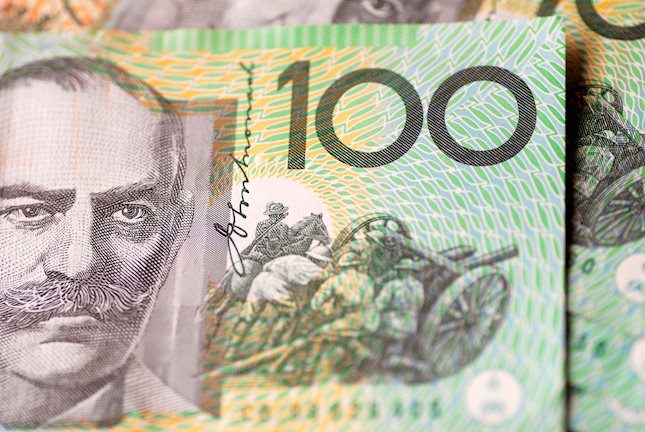Key points
-
Value stocks are expected to be more popular among investors in 2025.
-
What are the key characteristics of value stocks?
-
There are 5 things investors should look for in a good value stock.
Value stocks have outperformed lately. Here’s what you need to know to find good value stocks
With the markets a bit overheated after two years of 20%-plus gains, it is a good time to look for value stocks.
What are value stocks? Broadly, they are stocks that are trading below their intrinsic value, for whatever reason. It may be due to broader macro issues in their sector or industry, lack of exposure, mismanagement at the company, or some specific event that hurt the stock price, among many other reasons.
A good value stock is one that is poised to bounce back and be recognized for its value. A value trap is a cheap stock that is discounted for a reason and probably won’t amount to much anytime soon. To find a good value and avoid a value trap, here are five things that investors should look for.
1. Price-to-earnings (P/E)
One of the major value factors to consider is the P/E ratio. The P/E ratio is simply the share price relative to its earnings over the past 12 months. A lower P/E may suggest that the market has not recognized the stock’s value relative to its earnings. A high P/E suggests that there may be more enthusiasm about the stock than its earnings would indicate.
Benjamin Graham, the father of value investing, said a P/E of 9 or lower was a value stock. But a lot has changed in the past 75 years, so there is some flexibility there. The average P/E ratio is generally between 20 and 25, so you can use that as a guidepost.
But a P/E ratio should be viewed relative to industry peers, as well as a stock’s own P/E history. If a stock has historically traded at a P/E multiple of say 25, and is now trading at 15 times earnings, that might be considered a value.
2. Forward P/E and P/E-to-growth (PEG)
The forward P/E and PEG ratios are forward looking metrics. The forward P/E looks at the P/E ratio 12 months out, based on anticipated earnings. The PEG ratio is the P/E ratio divided by expected earnings growth over a certain time period. Typically, the PEG is calculated five years out.
The PEG may be the best indicator for an undervalued stock, as it factors in expected earnings growth. When investors see a PEG ratio of 1 or lower, that means it is undervalued relative to its expected earnings. The higher the PEG is over 1, the less of a value it is.
3. Price-to-book (P/B)
The P/B ratio is an excellent indicator of an undervalued stock. The P/B ratio looks at the stock price in relation to its book value, or the value of the assets on the books, minus its liabilities. It is akin to the amount of shareholder equity, or the value shareholders would receive if the company was liquidated.
Thus, it is a measure of the price of the stock in relation to its assets, as opposed to earnings. So, a P/B ratio at 1 or below is considered undervalued – and Graham suggested that a P/B below 1.2 is undervalued. The higher the P/B ratio is over that mark, the more overvalued it might be considered.
4. Current ratio or debt ratio
The current ratio and debt ratio, also known as the debt-to-asset ratio, helps investors determine how much debt a company is carrying. An abundance of debt can impede a company’s future growth.
The current ratio is a measure of liquidity, gauging a company’s ability to meet short-term obligations and expenses, typically up to one year out. It simply compares its current short-term assets — cash and cash equivalents, securities, inventory, receivables, accounts payable etc — to its liabilities, or obligations it must pay off in a year.
A current ratio at 1 or below is a red flag, with the farther below 1 being a bigger concern. That’s because it means the company only has 1 multiple, or less, of assets to liabilities. Graham suggested that a current ratio over 1.5 was good, meaning the firm has 1.5 or more, at least, in assets to liabilities. The sweet spot is typically a current ratio of 1.5 to 3.
The debt-to-asset ratio measures all of the company’s debt, including long-term debt, against its total assets. This one can be harder to find, but basically, it gauges the percentage of operations that are funded by debt. A ratio of 1 or more means the company has more debt than assets. For a good value stock, the debt ratio should be in the 0.3 to 0.6 range, but it can vary by company or industry.
5. Dividend
The dividend is a solid indicator of a good value stock. That’s because value stocks are typically established companies that use excess earnings to return value to shareholders via dividends, while growth companies invest in their future growth.
So, a consistent, high-yielding dividend stock means the company has stable earnings and liquidity. Further, the income or dividend reinvestment can provide cash or additional return potential, which is even more valuable during market downturns.
It should be noted that investors can also seek out value ETFs, which include baskets of value stocks from an index or those that are picked by a portfolio manager.
VALUEWALK LLC is not a registered or licensed investment advisor in any jurisdiction. Nothing on this website or related properties should be considered personalized investments advice. Any investments recommended here in should be made only after consulting with your personal investment advisor and only after performing your own research and due diligence, including reviewing the prospectus or financial statements of the issuer of any security. VALUEWALK LLC, its managers, its employees, affiliates and assigns (collectively “The Company”) do not make any guarantee or warranty about the advice provided on this website or what is otherwise advertised above. The Company is not registered or licensed by any governing body in any jurisdiction to give investing advice or provide investment recommendation. The Company disclaims any liability in the event any information, commentary, analysis, opinions, advice and/or recommendations provided herein prove to be inaccurate, incomplete or unreliable, or result in any investment or other losses.
Recommended content
Editors’ Picks

AUD/USD keeps the red near 0.6200 after Chinese inflation data
AUD/USD keeps losses near the 0.6200 mark following mixed Australian data and as expected China's inflation numbers. The RBA's dovish shift and China's economic woes add to the weight on the Aussie as risk sentiment remains tepid. Fedspeak eyed.

USD/JPY: Bears attack 158.00 on strong Japanese wage growth data
USD/JPY drifts lower to test 158.00 early Thursday after data showed that base salaries for Japanese workers increased at the fastest pace in 32 years. The data backs the case for the BoJ to raise interest rates, which, along with the cautious market mood, benefits the safe-haven Yen and drags the pair away from a multi-month top.

Gold price retreats toward $2,650 despite risk aversion
Gold price is retreating from near a monthly high of $2,670 in Thursday's Asian trading. Resurgent haven demand for the US Dollar amid risk aversion weigh on Gold price even as US Treausry bond yields extend pullback. Focus shifts to Fedspeak amid holiday-thinned trading.

Has Bitcoin topped for the cycle? Here's what key metrics suggest
Bitcoin experienced a 2% decline on Wednesday as the cryptocurrency market grapples with recent losses. On-chain data has indicated a shift in the accumulation of the leading cryptocurrency, suggesting that holders are increasingly selling their assets.

Bitcoin edges below $96,000, wiping over leveraged traders
Bitcoin's price continues to edge lower, trading below the $96,000 level on Wednesday after declining more than 5% the previous day. The recent price decline has triggered a wave of liquidations across the crypto market, resulting in $694.11 million in total liquidations in the last 24 hours.

Best Forex Brokers with Low Spreads
VERIFIED Low spreads are crucial for reducing trading costs. Explore top Forex brokers offering competitive spreads and high leverage. Compare options for EUR/USD, GBP/USD, USD/JPY, and Gold.